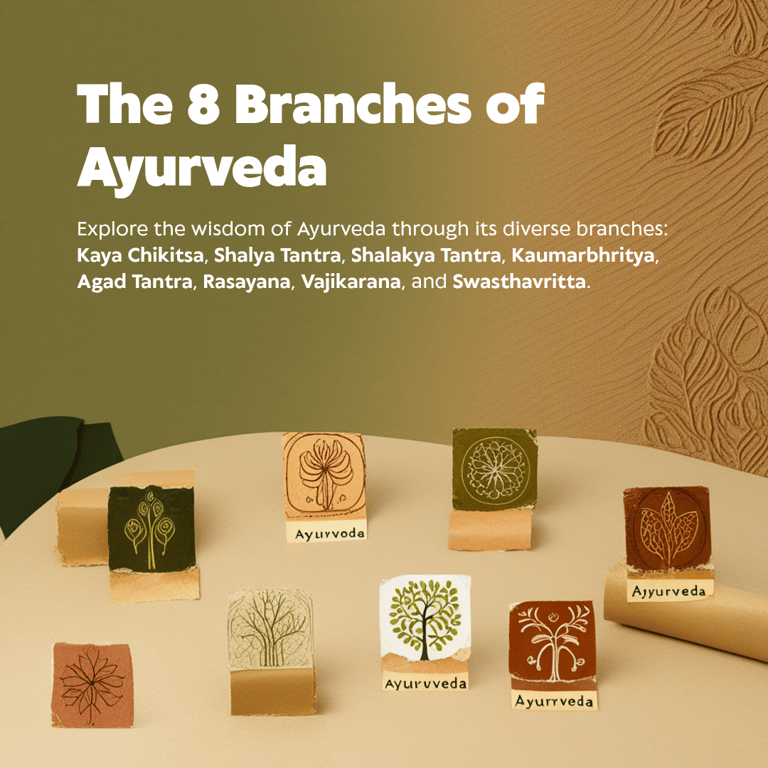Ayurveda Branches
8 Branches of Ayurveda
Dr Dushyant Nirmal
9/4/20252 min read


introduction to the eight classical branches of Ayurveda, known as the Ashtanga Ayurveda.
Ayurveda, the ancient "science of life" from India, is a holistic system of medicine that is comprehensively organized into eight specialized branches. This structure mirrors the specialization found in modern medicine and demonstrates Ayurveda's advanced and systematic approach to health.
---
### The Eight Branches (Ashtanga Ayurveda)
1. Kāyachikitsā (Internal Medicine)
The most well-known branch, it focuses on the diagnosis and treatment of general diseases affecting the entire body (*kaya*). It emphasizes balancing the digestive fire (Agni) and the three doshas (Vata, Pitta, Kapha) through diet, herbs, and lifestyle modifications.
2. Bālachikitsā (Pediatrics)
This branch deals with the care of children, from infancy through adolescence. It includes prenatal and postnatal care for the mother, guidelines for childbirth, pediatric diseases, and even techniques for assessing the health of a child based on subtle signs.
3. Grahachikitsā / Bhūtavidyā (Psychiatry)
This is the branch of mental health and psychiatry. It addresses psychological disorders, including those believed to be caused by supernatural influences (*grahas* or bhutas). It uses herbs, therapies, meditation, and spiritual practices to heal the mind and consciousness.
4. Ūrdhvāngachikitsā (Treatment of Head & Neck)
Focused on diseases above the clavicle (the neck, head, and sense organs), this branch is the precursor to modern ENT (Ear, Nose, and Throat). It covers treatments for eye diseases (Shalakya Tantra), ear problems, sinusitis, and headaches.
5. Shalyachikitsā (Surgery)
A highly advanced ancient surgical science. It describes techniques for extracting foreign objects, wound healing, and performing major surgeries using a vast array of surgical instruments. Its most famous text, the Sushruta Samhita, details complex procedures like rhinoplasty (nose surgery) and cataract removal.
6. Damstrachikitsā / Agadatantra (Toxicology)
This branch deals with the management of poisons, from animal bites (snakes, spiders, scorpions) to plant and mineral toxins. It also covers the topics of air and water pollution, making it incredibly relevant even today.
7. Jarāchikitsā / Rasāyana (Geriatrics & Rejuvenation)
Focused on promoting longevity and reversing the aging process. Rasayana therapies use special herbal formulations, diets, and lifestyle practices to rejuvenate the body, enhance vitality, and prevent degenerative diseases.
8. Vṛishachikitsā / Vajīkaraṇa (Aphrodisiacs & Reproductive Health)
This branch deals with enhancing sexual vitality and treating infertility. It aims to promote the health of both male and female reproductive systems, ensuring the conception of healthy offspring and improving overall sexual well-being.
---
Together, these eight branches form a complete medical system, addressing the health of the individual from birth to old age, and from physical to psychological well-being.
